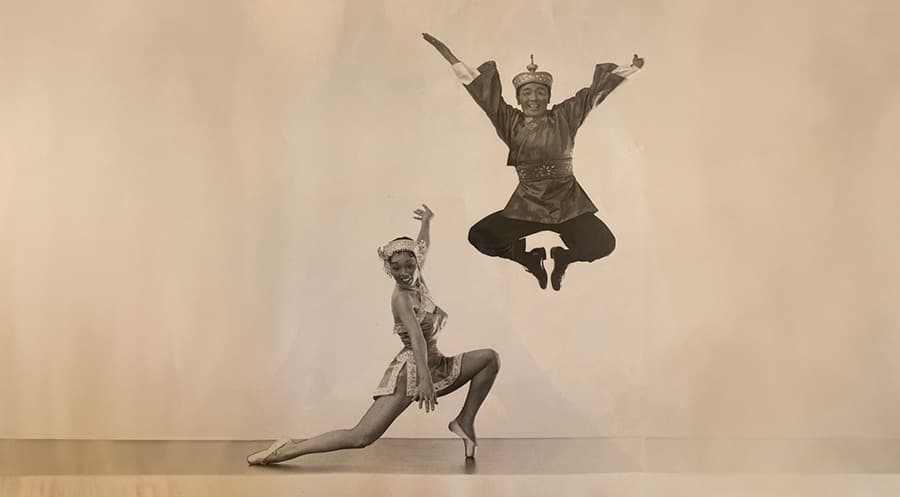Dorothy Toy Fong Papers

The Dorothy Toy Fong papers (M3073) have been fully processed and are now available to researchers. This unique collection covers the life and career of dancer Shigeko Takahashi, also known as Dorothy Toy, from the Chinese nightclubs of San Francisco to revues in Paris, France and around the world. The collection was acquired by Benjamin Lee Stone, the Curator for American and British History, in 2024.
Shigeko Takahashi was born to Japanese immigrants in 1917 in San Francisco. The family moved to Los Angeles in the 1920s, where they owned the Cherry Blossom Cafe and were active members of the Japanese American community. Shigeko began ballet lessons after her mother negotiated free lessons in exchange for meals at the restaurant. In 1930, Dorothy and her sister, Helen, met vaudeville performer Paul Wing. The trio started a tap dancing act called the Three Mahjongs. Helen eventually left the group to pursue singing and Dorothy took the stage name Dorothy Toy. The dancing duo of ‘Toy and Wing’ was born.

Toy and Wing toured around the United States throughout the 1930s and were featured performers in a number of short films, movies, and Broadway shows. However, World War II put a damper on their career: Paul Wing was drafted into the army and Dorothy's parents were sent to the Central Utah Relocation Center at Topaz following Executive Order 9066. The duo subsequently lost out on Hollywood contracts with Chico Marx and Kay Kyser since Dorothy couldn't return to the West Coast. Following the war, Toy and Wing continued touring and became headliners in San Francisco's Chinatown nightclubs and on the so-called Chop Suey circuit of nightclubs around the US. In 1960, Toy and Wing produced a musical revue featuring an all-Asian cast that travelled extensively through the US, Canada, Japan, and Europe. After her professional dance career, Dorothy Toy worked a variety of jobs in the San Francisco Bay Area. During the 1990s, she opened Studio 653 out of her home in Oakland where she taught ballet and tap. She passed away at age 102 in 2019.

Special Collections processes materials belonging to all sorts of individuals from artists to authors, but processing a collection belonging to a dancer poses distinct challenges – how does such a visual and auditory form of expression and movement translate to static documents? What documents remain from a career in dance? Although nothing can compare to a live performance, photographs and musical scores help bring the materials in the collection to life. The photographs range from pristine, posed studio shots to grainier images of live performances, and behind-the-scenes images of tours. In addition to these images, the collection also includes a trove of music scores that provide insight into what the duo was dancing to. Dorothy’s sister, Helen, often sang or arranged music for Toy and Wing. In fact, the collection includes many of her annotated scores with notes about dancers’ entrances and when to pause for dance sequences. Finally, the collection also includes Dorothy’s business files from when she ran her own dance troupe. These files include contracts she negotiated with performance venues, notes about choreography for routines, and correspondence with her dancers and club owners. Overall, the collection provides a glimpse into a unique chapter of American dance through the eyes of a woman who went against the odds to find success in the profession she so clearly loved.